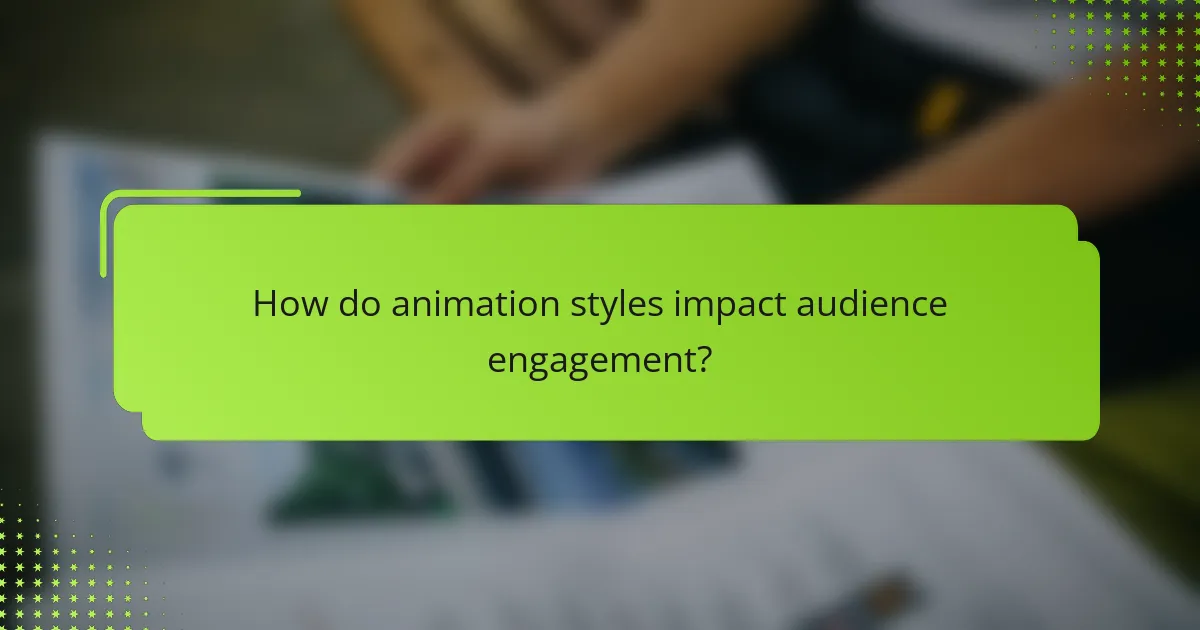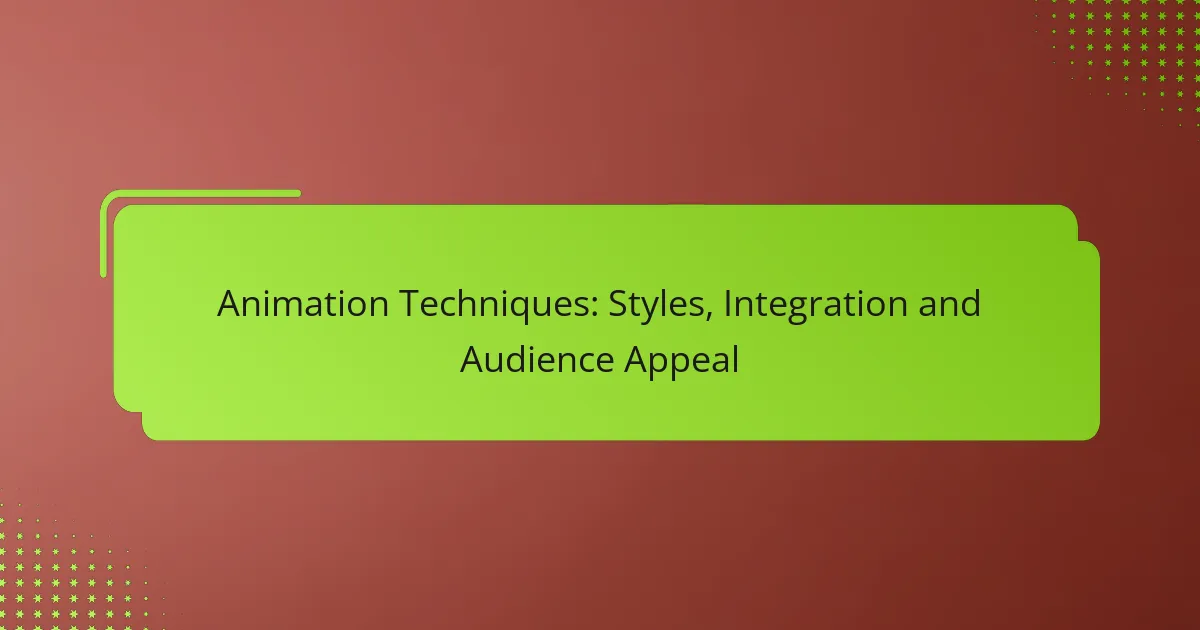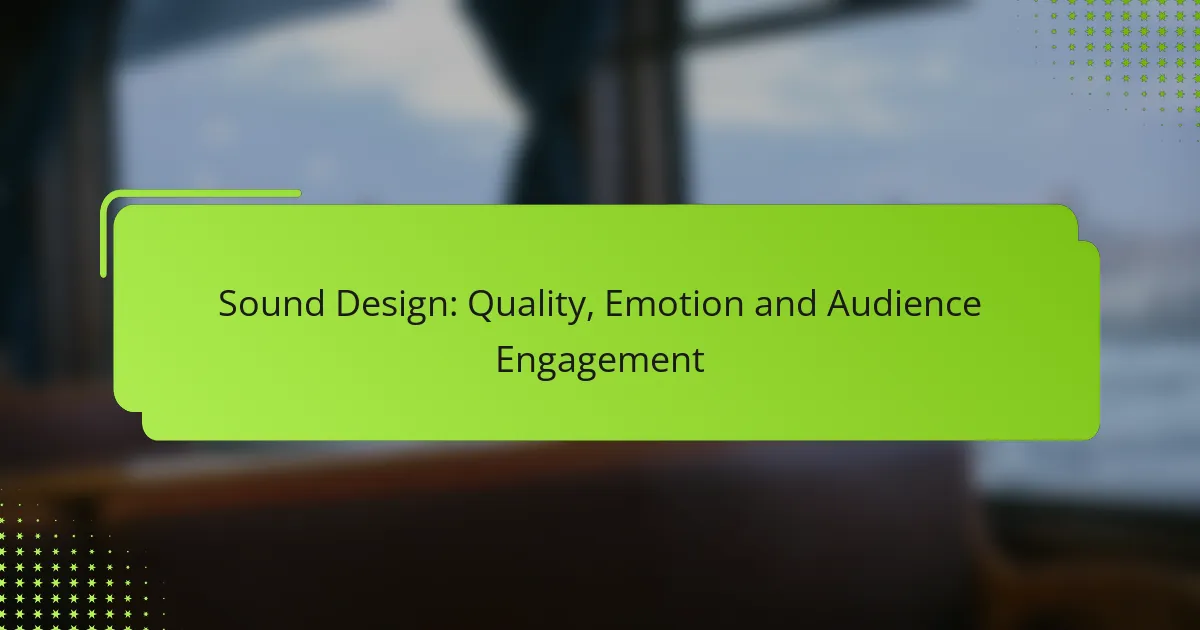Animation techniques encompass a variety of styles, including 2D, 3D, stop motion, and motion graphics, each offering distinct characteristics and audience appeal. The choice of animation style plays a critical role in shaping viewer engagement and emotional response, making it essential for creators to align their approach with the target audience. Additionally, effective integration of animation into marketing strategies can enhance brand identity and optimize audience interaction across different platforms.

What are the most popular animation techniques?
The most popular animation techniques include 2D animation, 3D animation, stop motion animation, motion graphics, and traditional animation. Each technique has unique characteristics, applications, and appeal to different audiences.
2D Animation
2D animation involves creating movement in a two-dimensional space, typically using software or hand-drawn techniques. This style is widely used in television shows, web series, and mobile applications due to its simplicity and cost-effectiveness.
Common tools for 2D animation include Adobe Animate and Toon Boom Harmony. When creating 2D animations, consider the target audience and the story’s tone to choose the appropriate art style.
3D Animation
3D animation creates lifelike characters and environments in a three-dimensional space, allowing for more realistic movement and depth. This technique is prevalent in feature films, video games, and virtual reality experiences.
Software like Autodesk Maya and Blender are popular for 3D animation. While it requires more time and resources than 2D animation, the visual impact can significantly enhance audience engagement.
Stop Motion Animation
Stop motion animation involves capturing individual frames of physical objects or puppets, which are then played in sequence to create the illusion of movement. This technique is known for its unique aesthetic and tactile quality.
Films like “The Nightmare Before Christmas” showcase stop motion’s charm. It requires meticulous planning and patience, as even a short sequence can take hours to produce.
Motion Graphics
Motion graphics focus on animated graphic design elements, often used in advertisements, title sequences, and informational videos. This technique combines text, shapes, and images to convey messages effectively.
Tools such as Adobe After Effects are commonly used for creating motion graphics. Keep animations concise and visually appealing to maintain viewer interest and comprehension.
Traditional Animation
Traditional animation, often referred to as hand-drawn animation, involves creating a series of images on paper or film, which are then photographed and played in sequence. This classic technique is the foundation of many beloved animated films.
While labor-intensive, traditional animation offers a unique artistic style that can resonate with audiences. Consider blending traditional techniques with modern technology for innovative results.

How do animation styles impact audience engagement?
Animation styles significantly influence how audiences connect with content, shaping their overall engagement and enjoyment. Different styles can evoke various responses, making it crucial for creators to choose the right approach for their target audience.
Visual Appeal
Visual appeal is a primary factor in capturing audience attention. Bright colors, unique character designs, and dynamic movement can make animations more attractive. For instance, a vibrant, cartoonish style may appeal to younger viewers, while a more subdued, realistic approach might resonate with adults.
When selecting an animation style, consider the target demographic and the themes of the content. Styles like 2D animation can offer a nostalgic feel, while 3D animation often provides a modern, immersive experience. Balancing visual elements with the intended message is key to maximizing appeal.
Storytelling Effectiveness
The effectiveness of storytelling in animation is heavily influenced by the chosen style. Certain styles can enhance narrative elements, making them more relatable or impactful. For example, a whimsical style can lighten serious themes, while a gritty, realistic style may deepen emotional narratives.
To optimize storytelling, align the animation style with the story’s tone and message. Consider using visual metaphors or stylistic choices that reflect character emotions or plot developments. This alignment can lead to a more cohesive and engaging viewer experience.
Emotional Connection
Animation styles can create strong emotional connections with audiences by influencing how characters and stories are perceived. A style that emphasizes facial expressions and body language can enhance empathy, allowing viewers to relate more deeply to the characters.
To foster emotional engagement, choose styles that highlight key emotional moments. For instance, soft, rounded shapes may evoke warmth and friendliness, while sharp, angular designs can suggest tension or conflict. Understanding the emotional landscape of your audience will guide effective style choices.

What are the best practices for integrating animation into marketing?
Effective integration of animation into marketing involves aligning visuals with brand identity, understanding the target audience, and optimizing for various platforms. These practices enhance engagement and ensure that the animation supports marketing goals.
Brand Consistency
Maintaining brand consistency is crucial when integrating animation into marketing. This means using colors, fonts, and styles that reflect your brand’s identity. For example, if your brand is known for a playful tone, animations should be lively and colorful to reinforce that image.
To achieve this, create a style guide that outlines the animation elements that align with your brand. Consistency across all marketing materials helps build brand recognition and trust among consumers.
Target Audience Alignment
Understanding your target audience is key to effective animation integration. Tailor your animations to resonate with the preferences and behaviors of your audience. For instance, younger audiences may prefer fast-paced, vibrant animations, while older demographics might respond better to more subdued and informative styles.
Conducting audience research can help identify what types of animations engage your specific market. Use surveys or analytics to gather insights on viewer preferences and adjust your animation strategies accordingly.
Platform Optimization
Different platforms have varying requirements and best practices for animation. For instance, social media platforms like Instagram and TikTok favor short, eye-catching animations, while websites may allow for longer, more detailed animations. Understanding these nuances is essential for maximizing impact.
To optimize animations for each platform, consider factors like file size, format, and duration. Aim for quick loading times and ensure animations are mobile-friendly, as a significant portion of users access content via smartphones. Testing animations on multiple devices can help ensure a seamless user experience.

What are the criteria for selecting animation styles?
Selecting animation styles involves considering factors such as target demographics, project objectives, and budget constraints. Each of these criteria plays a crucial role in determining the most effective animation approach for a specific project.
Target Demographics
Understanding your target demographics is essential for selecting the right animation style. Different age groups and cultural backgrounds respond uniquely to various visual elements. For instance, vibrant colors and playful characters may appeal more to children, while a minimalist design might resonate better with adults.
Conducting audience research can help identify preferences and expectations. Surveys, focus groups, or analyzing existing content can provide insights into what styles will engage your audience effectively.
Project Objectives
Your project objectives greatly influence the choice of animation style. If the goal is to educate, a clear and straightforward style may be most effective, such as infographics or explainer animations. Conversely, if the aim is to entertain, a more dynamic and stylized approach might be appropriate.
Consider the message you want to convey and how the animation style can enhance that message. Aligning the style with the project’s goals ensures that the animation serves its intended purpose.
Budget Considerations
Budget constraints are a critical factor in selecting animation styles. High-quality animations often require significant investment in time and resources. Simple styles, such as 2D animations, can be more cost-effective compared to complex 3D animations or hand-drawn techniques.
Evaluate the trade-offs between quality and cost. It may be beneficial to prioritize certain elements of the animation that align with your objectives while keeping other aspects simpler to stay within budget. Always plan for potential additional costs, such as voiceovers or music, which can impact the overall budget.

How does animation influence viewer retention?
Animation significantly enhances viewer retention by capturing attention and making content more memorable. The dynamic nature of animated visuals engages audiences, encouraging them to stay focused and absorb information more effectively.
Increased Engagement
Animation increases viewer engagement by providing visually stimulating content that holds attention longer than static images or text. For instance, animated explainer videos can convey complex ideas in a more digestible format, leading to higher viewer interaction rates.
Consider using animation in marketing materials or educational content to draw in your audience. A well-placed animated graphic can boost click-through rates by several percentage points, making it a valuable tool for content creators.
Improved Recall
Animation enhances memory retention by creating a vivid and memorable experience for viewers. Studies suggest that people are more likely to remember information presented with animation compared to traditional formats, as the movement and color variations help reinforce key messages.
To leverage this, incorporate animated elements that highlight important data or concepts. For example, using animated charts in presentations can make statistical information more relatable and easier to remember, leading to better audience understanding and retention.



